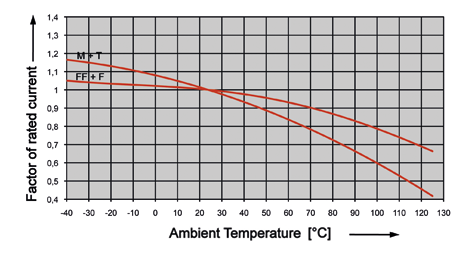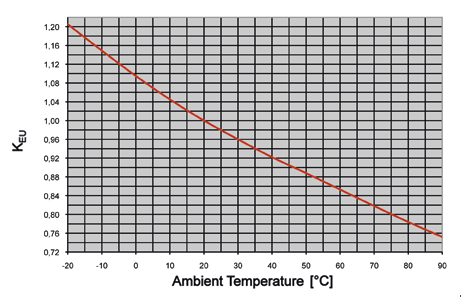
| DE | EN | Contact | About us | Terms of Business | Imprint | Privacy & Cookies | Help | Newsletter | Registration | Login | |
 |  |  |  |  |  |  |  |  |  |  |  |
| Home > News > Case Studies > Passive and Electromechanical > Ensuring a fuse trips only when it should | |||||||||||
Ensuring a fuse trips only when it shouldSchukat gives tips on choosing the right fuse to protect your equipment
Miniature fuses like those produced by Siba protect electrical installations, devices and modules from excessive current loads. To make sure that a fuse only trips in a fault situation and thus to protect equipment from unwanted downtime, it is important to choose the right fuse in advance.A number of factors must be taken into account when making this choice, and they are crucial for the service life and functionality of the fuse. Important influencing factors:The choice of fuse is often based on rated current, rated voltage and characteristics. But be careful: we often take it for granted that the rated current given will also flow continuously through the fuse. This is rarely the case, however, because the applicable standards invariably assume optimal conditions for the fuse when determining the rated current (23°C ambient temperature, unhindered heat dissipation, continuously flowing current). • Ambient temperature and rated current:If the ambient temperature is higher than 23°C, the possible long-term current load is reduced. The heat in the fusible-element can no longer be sufficiently dissipated, which can lead to the fuse tripping below the rated current. Conversely, for temperatures below 23°C, the fuse only trips at higher currents.
• Ambient temperature and melting integral:The values given in the datasheets for the melting integral of a fuse also assume a normal room temperature. If the temperature rises to a higher level, the specified melting integral of the fuse is reduced. If ambient temperatures are below 20°C, an increased melting integral can be expected.
• Inrush currents:There are various methods for evaluating start-up currents. Commonly used: Comparing the inrush current with the time/current characteristics of the fuse. For this, the amplitude of the start-up current and the time over which the current flows are entered into the characteristic curve. This then shows whether the start-up current will cause the fuse to trip. To avoid overloading the fuse, a sufficient margin between the starting current and the actual fuse tripping current is required. Guideline: Start-up current = max. 60% of tripping current. • Pulsed loads:Pulsed loads and short-duration inrush currents can be assessed by comparing the load to the fuse's melting integral: First determine the energy yield of the load acting on the fuse (if necessary with approximations), then compare the derived pulse integral with the melting integral of the fuse, taken from the datasheet. If a pulse occurs only once or a few times during the life of the device, a fuse melting integral greater than the determined pulse integral is sufficient. In case of a frequently recurring load, then a sufficient margin between the melting integral of the fuse and the pulse integral is required. Schukat electronicWe offers a wide selection of different kinds of miniature fuses from manufacturer Siba. These include: |
|


